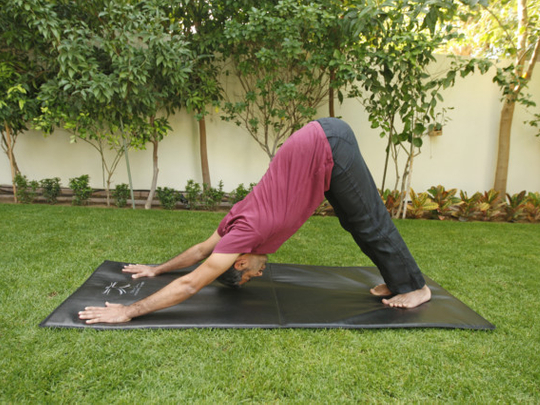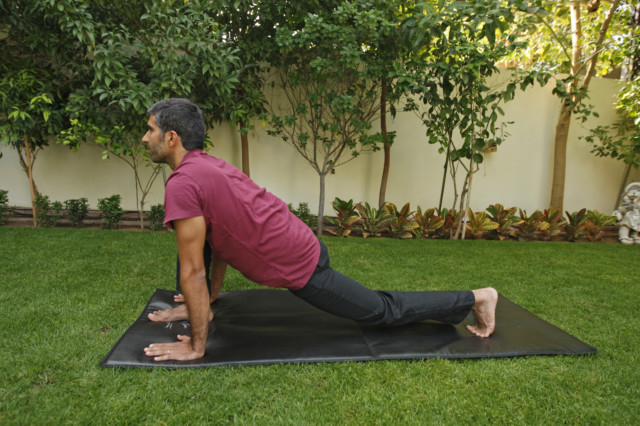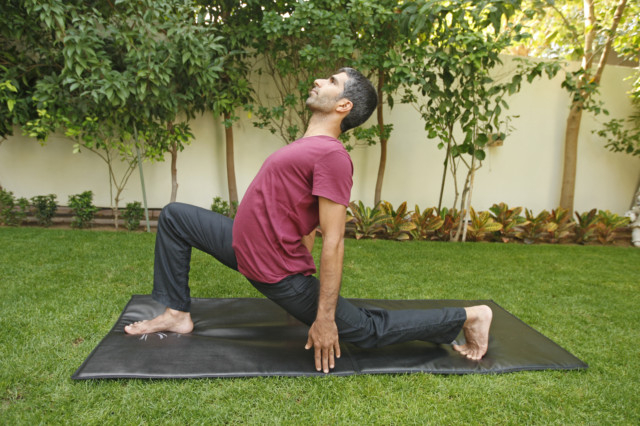
As we age our bones lose minerals and mass, becoming porous and weaker. This can lead to an increased risk of fractures, slower recovery from bone-related injuries, deformity of the spine and an overall compromise of quality of life. By regular practice of weight-bearing yoga poses, one can maintain a healthy bone density and lead an active life well into their advanced years.
Though the following postures are simple to practice and can be easily done at home, but we suggest you seek medical advice before starting them.
Ashwasanchalanasna (Equestrian pose)
Ashwa – horse, Sanchalan – movement or march, asana – pose. This pose is routinely performed during a sequence of Sun-salutations. The version of the pose shown here demands a fair amount of flexibility, strength and focus but at the same time rewards you with strong legs and a powerful stretch in your thighs, groin and hip, ensuring flexibility and alignment of the spine.
Procedure
• Begin with the Adho Mukha Svanasana (downward facing dog pose) as shown in image 1.
• While exhaling, lunge forward with your right leg. Bring your right foot between your hands, facing forward.
• While inhaling, let your torso be vertical and upright. Your arms should be perpendicular to the ground and if possible keep the finger tips or the palm in contact with the floor. Ensure the left knee is above the ground.
• Arch your back and tilt your head so you are looking upwards.
• Hold the posture for 30 seconds or up to a minute, maintaining normal breathing.
• Return to the starting position by reversing the order of movements and repeat on other side.
Benefits:
• Strengthens the hips, glutes, legs, ankles and feet.
• Lengthens the psoas (thigh) muscles.
• Provides a deep stretch to the lower back.
• Harmonises the nervous system.
Caution: Not to be practised by people with a knee or ankle injury. Those with back and/or neck injury should modify the pose under expert guidance.




